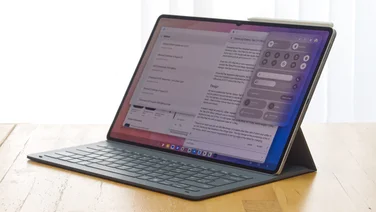To help us provide you with free impartial advice, we may earn a commission if you buy through links on our site. Learn more










- Sharper 300ppi E ink display
- USB-C charging
- Solid battery life
- Still not waterproof
- £15 more expensive than 2019 model
Amazon’s entry-level Kindle e-reader significantly improved with the arrival of the 2019 model, which filled in some important gaps by introducing a reading light as well as Bluetooth functionality and the ability to download and listen to Audible audiobooks. Somehow it did all this while faithfully sticking to its affordable price tag.
With the release of 2022’s 11th-generation Kindle, a saturation point might soon be on the horizon. Perhaps not just yet though, as there are a few new upgrades this year, most notably a sharper display, the introduction of USB-C charging and extra storage space. This might justify the purchase of the new e-reader with its slightly steeper price.
READ NEXT: Amazon anounces new Kindle Scribe ebook reader
Amazon Kindle (2022) review: What’s you need to know
Outwardly, the new Kindle looks and feels mostly identical to its predecessor. It’s a slim, 6in e-reader that sits comfortably in your hand and is nice and light.
One of the biggest upgrades to the new Kindle is an increase in display resolution. The anti-glare E ink screen has been boosted from 167ppi to 300ppi, matching that of Kindle’s higher-end Paperwhite and Oasis models. Text is better-defined and images look clearer, so now you really can judge a book by its cover.
The new entry-level Kindle has also caught up with the Paperwhite by introducing USB-C connectivity, replacing its previous micro-USB port. Battery life is longer, too: a single charge now lasts up to six weeks according to Amazon, with the caveat that activity is limited to half an hour of “wireless usage” a day, with the brightness level set to 13 (maximum brightness is set at 24).
Finally, storage space has increased four-fold, from 4GB to 16GB, allowing for a more comprehensive library of titles on-the-go.
Amazon Kindle (2022) review: Price and competition
The 11th-gen Kindle launches at £85 (with ads) and £95 (without ads), which is £15 more expensive than the 2019 model. This is a step up, yes, but with the rather significant increases in display resolution and storage space, as well as inflationary changes in the years since, that’s forgivable. In fact, I’d argue it’s still more than fair to refer to Amazon’s basic Kindle as an entry-level e-reader – it’s still the cheapest you can buy.










Indeed, the cheapest equivalent from Kobo, Kindle’s only serious rival, is not much cheaper than this. The Kobo Nia will cost you £90, while the brand’s latest offering – the Clara 2E – is on par with the Paperwhite at £130.
With the release of its successor, you can now pick up a refurbished 2019 Kindle for less: just £72 without ads. It’s also worth mentioning here that, during peak sales periods such as Black Friday and Amazon’s own Prime Day(s), it’s commonplace to see the Kindle discounted. So, if you play your cards right and time your purchases, you probably won’t have to pay full price anyway.
Amazon Kindle (2022) review: Features, design and reading experience
As far as user experience goes, there isn’t a great deal to talk about in the way of new features beyond the improvements I’ve already touched on. The Kindle is compact and feels light in your hand. In fact, it weighs just under 160g and measures approximately 158 x 109 x 80mm, with a 6in display. The sharper screen looks great too: not only is text even more of a delight to read, but the boost in pixels makes the option to set book covers as the device’s standby screen a particularly attractive feature.
You can search for and download titles from the Kindle store directly to your device via Wi-Fi and, as the 2019 Kindle introduced, you can connect to Bluetooth speakers or headphones in order to listen to audiobooks. Some Kindle titles also come available with Audible narration, at a small extra cost, so you can listen along while you read.










The reading light (another 2019 addition) can be manually adjusted from a drop down menu, and changing the typeface, text size and other accessibility settings couldn’t be simpler.
The Kindle ebook store itself is comprehensive, offering a vast range of titles, from bestselling new fiction, to classics, biographies and cookbooks. However, unlike Kobo, you are limited to what’s available on the Kindle store. This isn’t great news for those looking to import their own PDFs or EPUB files onto an e-reader (if this is you, Kobo’s support for a wide range of file formats is a big advantage), or for anyone reluctant to embrace a reliance on Amazon. Nevertheless, there’s a fantastic selection of books on offer.
Battery life is solid, too. And while I wasn’t able to verify Amazon’s six-week claim, I did note that a solid hour’s usage spent reading and fiddling with the device’s settings only used up around 5%. I also found that, during a short charging period, battery life rose 20% (from 78% to 98%) in around 30 minutes.
A couple of hangups we had about the previous Kindle do remain, though: it’s still not waterproof, and there are no physical buttons to turn the pages with (you’ll have to invest in the Kindle Oasis for this luxury). But, at the end of the day, these feel like minor perks rather than crucial features. After all, not being able to read in the bath isn’t such a great sacrifice.










What I did find more irritating, however, was the temporary disappearance of the ‘back’ button that allows me to return to the home screen. This was a one-time occurrence during my time reviewing the Kindle that meant I had to restart the device when I wanted to exit the book I was currently reading.
Amazon Kindle (2022) review: Verdict
When it comes to the 2022 entry-level Kindle, the crucial question is whether Amazon has introduced enough improvements to justify the price increase. Or, to put it more bluntly, is it better than its predecessor by £15?
I’d argue that it is. Ultimately, an extra £15 is a small price to pay for a device that has a resolution that is almost twice as detailed, and a storage space that is four times as big, as that of its predecessor. Not to mention the introduction of USB-C charging.
Of course, the Kobo is still a viable alternative worth considering, particularly if you want greater freedom when it comes to file formats. But if you’re invested in the Amazon Kindle and Audible brands, and you’re after something under the £100 mark, then the Kindle remains the best entry-level e-reader you can buy.







